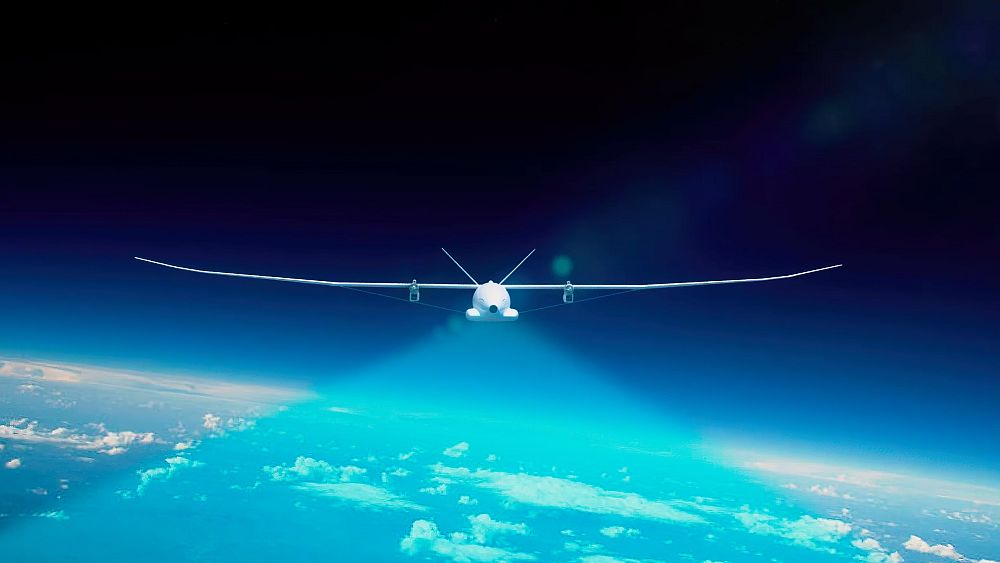
One of the main challenges telecoms companies (TELCOs) face is how to get a signal to hard-to-reach places. Billions of people still don’t have reliable access to the Internet or mobile coverage.
It’s not just populations in remote areas that suffer from a lack of connection. Physical barriers such as mountains, valleys and forests can obstruct the signal coming from traditional sources such as telecom towers.
At this year’s Mobile World Congress (MWC) in Barcelona, the topic was, as ever, near the top of the agenda – and one company thinks it may have a high-tech and greener solution.
“Essentially, we’re building a high altitude telecoms mast, and by a high altitude, it sits at 60,000 feet, so way up above normal air traffic, and it stays up for a week,” Richard Deakin, the CEO of Stratospheric Platforms, told Euronews Next at MWC.
Deakin’s company has completed a proof of concept and is now raising money to build its prototype – a hydrogen-powered aircraft which will be autonomously piloted, beaming down signals to a much wider area than current telecom masts can manage.
“It’s powered by hydrogen so it’s very green. The exhaust is water vapour and it has a massive three metre by three metre phased array antenna that creates 500 independently steerable beams”.
The aircraft will fly in a circle for six days at a time, beaming the signal to a fixed spot throughout the cycle.
“It’s not a very exciting flight plan,” said Deakin. “So, even though the aircraft moves, the pattern on the ground is fixed, because the beams move just to ensure they stay pointing at the same place during the flight”.
“One aircraft can do the same job as 450 telecom masts,” he added, with the company claiming it could provide 5G coverage for the entire United Kingdom with just 24 aircraft in the air at a time.
The aircraft are known as high altitude platforms, or HAPs.
While it is still only a proof of concept, the company is garnering interest from TELCOs and organisations such as the United Nations’ Broadband Commission, and it believes it is well-placed to deliver amid recent advances in hydrogen-powered aircraft.
It has raised $70 million (€65.67 million) of Series A funding from investors, including Deutsche Telekom, and is now hoping to raise $150 million (€140 million) in a Series B round to complete the prototype development.
Delivering signal from the sky
Others have tried and failed to deliver the Internet from on high in the stratosphere. Tech giants such as Google and Facebook had respective projects which were eventually shut down.
Google’s attempt, Loon, was shut down in 2021. The idea behind it was to use high-altitude balloons to provide Internet access to remote areas. Their equipment was powered by solar panels, and they were filled with helium.
Despite commercial pilot projects in countries like Kenya and Peru, it was shuttered due to lack of profitability.
Facebook meanwhile ended its Internet-delivering drones project – Aquila – back in 2018.
Deakin believes you can have the best technology, but without the right economical context, these sorts of projects are never viable.
“You need a sort of commercially robust system that can deliver telecom services in an economically attractive way for TELCOs,” he said.
“I think the key actually is around the power because Facebook’s programme was cancelled a while back, Google’s – that was solar power as well – they just don’t generate enough power to cover the sort of areas that you need to make things economical.
“We did some calculations recently from one Middle East customer where they would have needed 49 very large solar powered aircraft to do the same job as one of our HAPs,” he claimed.
Stratospheric Platforms is aiming to have its hydrogen-powered aircraft in service by 2026.




